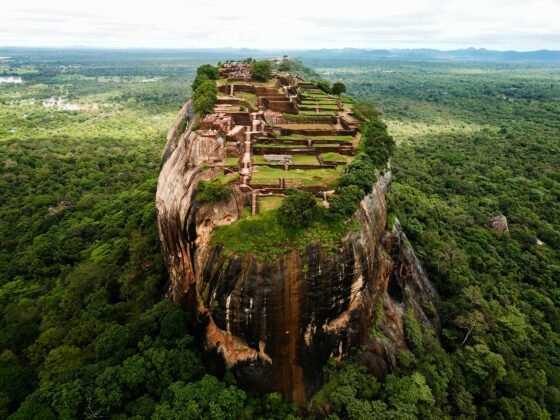
If you ever find yourself staring face-to-water at the Nile River, standing in front of the great pyramid of Giza, or wandering with abandon at the Grand Egyptian Museum, then Egypt has welcomed you with open arms. After all, you never know; the necessary travel documents may be easier to acquire than you think, especially if you use an online service like iVisa. You’d most likely stroll by the ancient temples and dividing walls soon, and a helpful understanding of the beautiful symbols should add more anticipation to your adventure.
Ancient Egypt was a stunning civilization so deeply shrouded in religion and spirituality that almost four thousand years Before Christ, they adopted a system of writing believed to have come straight from their powerful gods. I certainly believe this claim, because hieroglyphics (Greek for “sacred carvings”) are absolutely too beautiful to not be heaven-crafted. The hieroglyphic system is an extensive combination of alphabetic, syllabic, and logographic characters expressing distinct ideas, words, and spiritual meanings. Well, they were mind-blowing in the literal sense, so difficult to understand that only the most specially-educated persons, the Scribes, could make sense of them and write scripts fluently.
With about 1,000 established symbols of ancient Egypt under the hieroglyphic system, most of the commoners, who were simple farmers and builders weren’t privileged to read or understand them. However, Ancient Egyptian culture was embellished in divine inclinations and everyone, irrespective of social status, deserved to understand spiritual ideas. A few symbols were established to express spiritual ideas and teachings so everyone could follow.
However, when the Romans invaded Egypt in 30BC, their writing system took over and hieroglyphics gradually became obsolete. The last known hieroglyphic script was written in the fifth century AD.
Today, you would find these symbols still evident in the temples, on the tombs, in the great halls, and along the majestic walls in the North African country.
Eight of the most important ones, relating to spirituality and religion, are discussed below:
The Ankh
Also known as the “key of life”, the Ankh is probably the most popular Egyptian symbol in modern civilization, representing eternal life, immortality, purity, and sometimes, the union between males and females. It is depicted by a cross that appears as a key with a looped top, the circular shape representing the never-ending reality of eternal life.
Ancient Egyptians often wore Ankhs as a symbol of continuity and in fealty to the goddess Isis, a powerful deity believed to give life to the Nile and protect all who were bound to her. Egyptologists have never concluded on a single definitive symbolism for the Ankh, but it’s generally accepted to represent life and permanence.
The Djed
Depicted by a pile of four pillars in a spine-like arrangement that almost appears as a Chess piece, the Djed was the Ancient Egyptian symbol of strength, stability, and the power of resurrection from the dead. The Djed symbol is regarded as the “The Backbone of Osiris“, god of the dead, the ruler and judge of the deceased. The four pillars are said to represent the four ends of the earth and ancient Egyptians would often wear the Djed as an amulet to seek blessings of strength, bravery, fertility, and the hope of rising again in the after-life.
The Scarab
In biology, the term Scarab refers to the dung beetle that rolls up dung to lay its eggs in, and the fermented pile will serve as food for its young as they grow. In Ancient Egyptian culture, the beetle-shaped Scarab amulets represent transformation, rebirth, the cycle of life, procreation, and growth. The Scarab is associated with the god Khepri, the beetle-faced god in charge of the rising and setting of the sun, and the renewal of life.
The Was Sceptre
The Was Sceptre, appearing as a mythological animal held on a staff that ends in the shape of a canine tooth, was the Ancient Egypt symbol of sovereignty, power, dominion, and ultimate authority. Nearly all the Egyptian gods had a personal variation of the Was Sceptre. Pharaohs also had Was Sceptres to portray their ultimate power in the human world. In the hands of different gods, the Scepter represented different concepts. With Ra, god of the sun, it symbolized rebirth. With the falcon-headed god, Horus, ruler of the sky, it symbolized the realm above the earth, and with Hathor, goddess of fertility and the sky, the Sceptre was a symbol of impending happiness.
The Shen
The Shen (the Greek word for “encircle”) was the ancient symbol of infinity, perfection, and completeness. Depicted by a circle with a line tangential to the centre, the Shen-ring was a very popular protective symbol and was worn by everyone, irrespective of social status or religious standing. It was engraved in the temples, tombs, on personal objects, and home walls, either as a sign of protection or as a declaration of perfection.
The Eye of Ra (Udjat)
Many modern descriptions of Egyptian symbols would often interchange the Eye of Horus with the Eye of Ra or vice versa, and wrongly so. These are two different symbols associated with distinct gods. Ra is the god of the sun whose daily activity was to sail a boat across the sky and back again as sunset approached. Depicted as an eye with a studded pupil and a teardrop, the Eye of Ra is often described in two main versions.
The first one tells the tale of the right eye being an aggressor that was removed in vengeance and sent to destroy all of humanity when Ra was disrespected. Believed to be at his weakest at nights, Ra was vulnerable but he sent his right eye on a destructive journey, only to be calmed later by red beer.
In another version, the Eye of Ra was the fatherly extension of love he’d pulled out to search for his lost children. Another eye grew back and when the first one returned with the kids, it became an agent of protection used by other gods.
The Eye of Ra represents power, vengeful fury, regeneration, and overwhelming parental love.
The Eye of Horus (Wadjet)
This is one of the most famous symbols in Egyptian history as seen in modern times, probably more than the Ankh.
Horus is the falcon-headed Egyptian god of the skies, who is believed in ancient mythology to have lost his left eye in a horrific battle with Seth, the god of disorder. The goddess of the sky, Hathor, restored Horus’s eye and it became a symbol representing healing, sacrifice, love, and the power to make whole again. Ra lost his right eye, Horus lost his left eye, and together, these organs made a complementary pair. The Eye of Horus was used to design medical tools with partitions for measuring herbs and ingredients during medicine production.
The Tyet
The Tyet is the red-colored symbol that represents the power of femininity, also called the “Blood of the goddess Isis” or the “Isis knot”. It appears very similar to the Ankh except that the arms are flapped down in place with the middle shaft. It also has a looped top that curves into a perfect ring, and the entire symbol represents the female reproductive system. In conjunction with the Djed, the symbol of the god of masculinity, Osiris, the Tyet represents the binary nature of life and the complementary powers of masculinity and femininity.
The Ancient Egyptians communicated through these special symbols, and it’s quite amazing how, nearly two millennia later, some of these symbols have remained popular and relevant in many cultures beyond Egypt – a testament to the timeless nature of a once powerful and progressive civilization.
So pack your bags, figure out what sort of travel documents you need (for example, there’s a special Egypt eVisa for India citizens – it all depends on what country your passport is from whether you need additional documents to travel in Egypt), and go see what their is to learn from this ancient and departed civilization.











